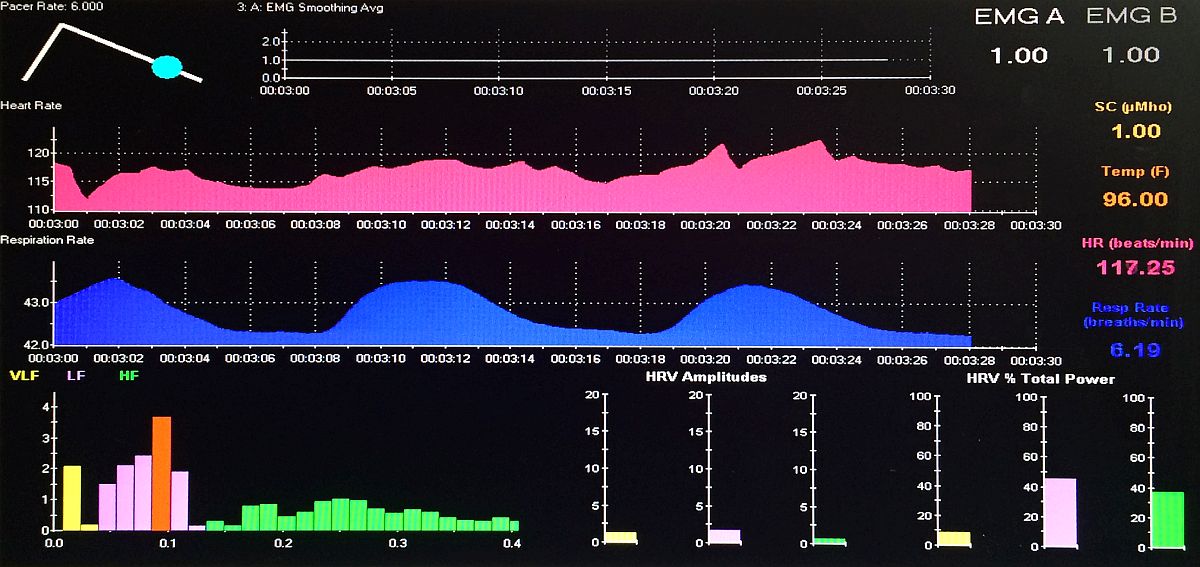
Heart rate variability or HRV is a measure of heart health. The more your heart rate rises and falls in sync with your breathing, the better. HRV measures that. (It’s way more complicated than that, but for helping you with treatment and learning how to use deep breathing to relax, that definition is good enough.)

Screen Grab of Heart Rate in Sync with Breathing
What you may see on the computer screen when you’re doing HRV training during brain biofeedback or any neurostimulation.
This image shows a poor HRV, a typical consequence of brain injury.
Pink at the top of the image shows the rise and fall of my heart rate; the jagged peaks and valleys appear on top of a not-great smooth rise sort of in sync with the breathing.
The blue shows my inhalations going up and exhalations going down in the way you want to aim for to induce relaxation and increase HRV.
“HRV Amplitudes” show the levels you want to adjust. Yellow for your sympathetic system (fight or flight); purple-pink for peak amplitude, which is what you focus on during training to have it become the highest level of the three; green for the parasympathetic system (laid back). I was given the goal of 10 for the middle level.
The ADD Centre begins each brainwave training session with training heart rate variability to relax the client and wrote a paper on this method and the science behind it (PDF). HRV training also helps to improve your heart health, I believe. After I began low-intensity laser therapy, my HRV improved significantly. The jagged peaks visible in the screen grab diminished much more and disappeared at times, and my heart rate came into sync with my breathing. The peak (middle) HRV Amplitude rose above 5. This shows the benefits of combining neurostimulation therapies when treating diffuse axonal injury or any brain injury that affects heart function.
To read more about this topic on the ADD Centre website, click here and scroll down to Heart Rate Variability Training.